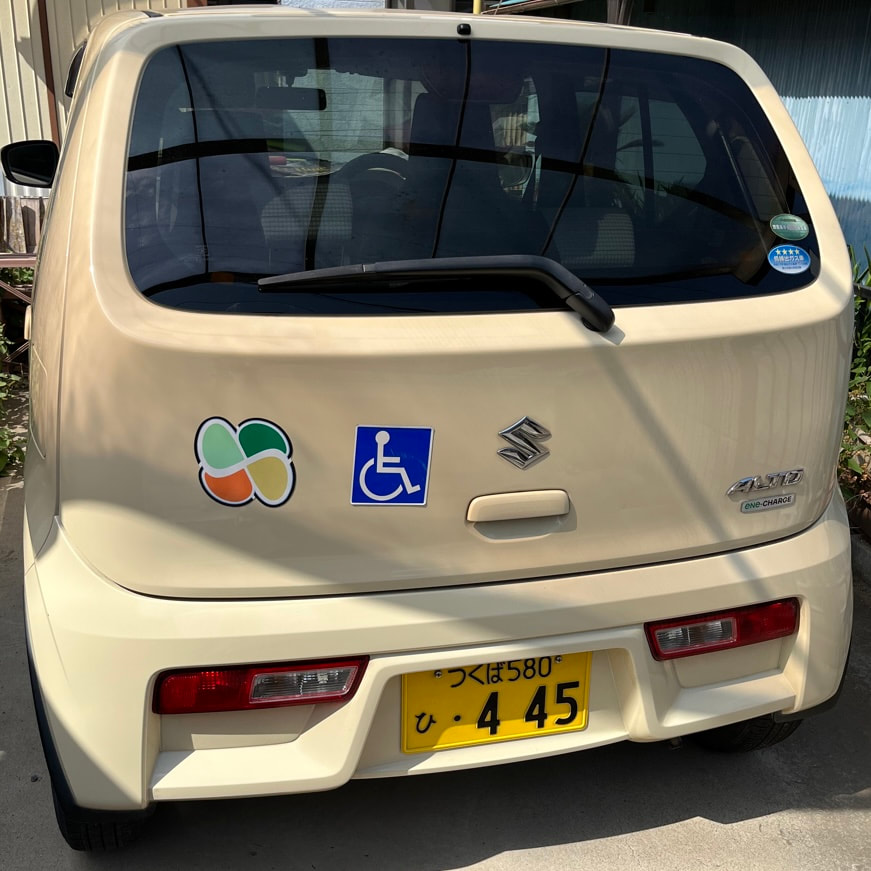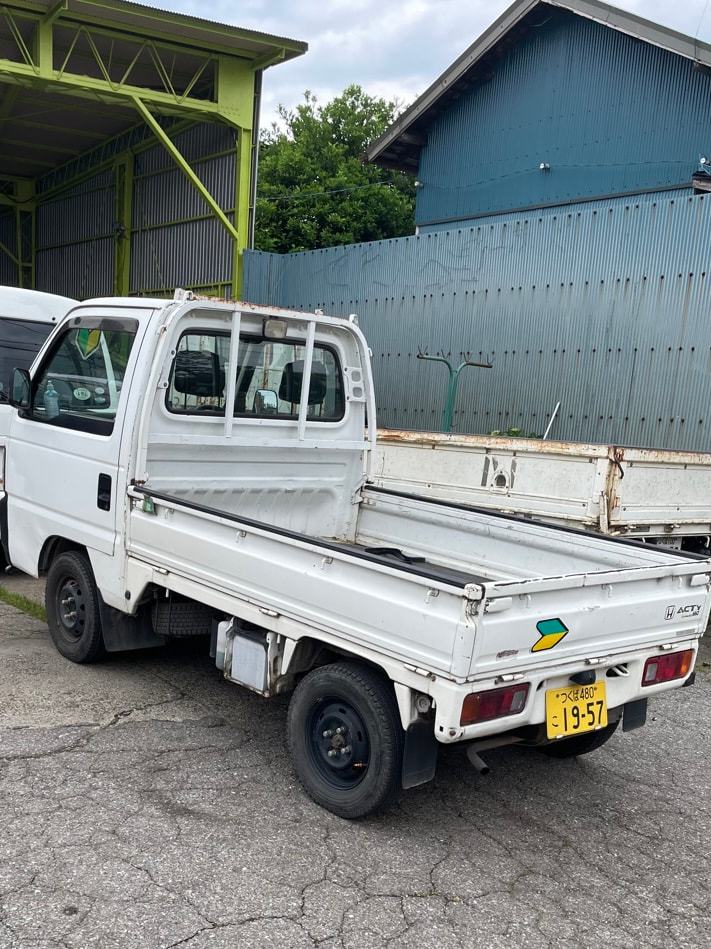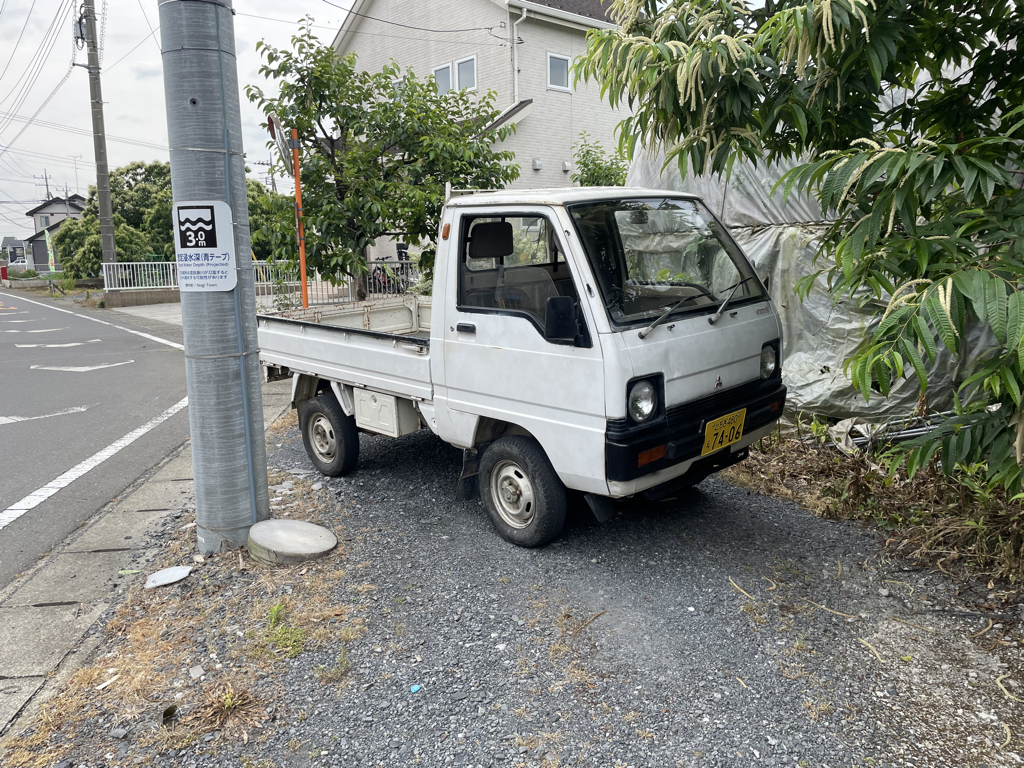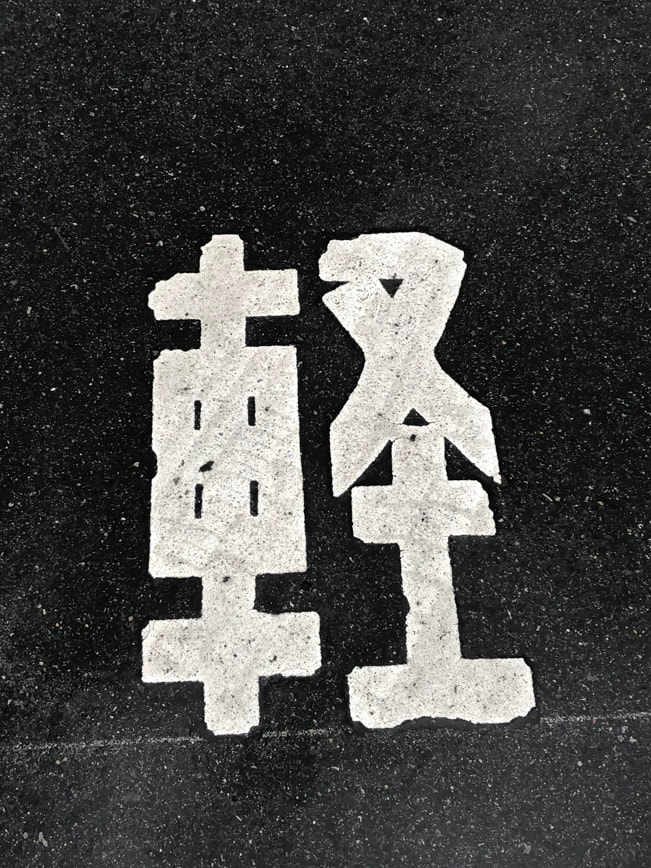August 12, 2022:
The Kei Truck - The Unsung Workhorse Of Post-War Japan
Once you come to Japan and am able to walk or drive around the streets of Tokyo or any other Japanese city, you will notice some cars have yellow number plates. Walk around a bit more, and you see that these cars are on the small side - there are SUVs in Japan which would not look lost on a Colorado suburban street, but they do not have yellow number plates. And even if there is a kind of jeep with the same yellow number plates, it (the Suzuki Jeepny) is really small for a Jeep, with tires that are narrow enough for a motorcycle.
And that says something about the origin of the cars with the yellow number plates. They are “kei” cars, a type of vehicle created to traverse the narrow backstreets and field lanes of Japan. Originally, just like the VW Beetle, they were made with a motorcycle engine, one reason this type of car is dominated by Suzuki, outside Japan perhaps better known as a maker of motorcycles.
The kei car category was created already in 1949 as a replacement for the three-wheeled mini-trucks used on farms, usually from the Italian Piaggio design. Like many other farm-related things in Japan, the tax rules for kei cars are extremely favorable - and one reason they have not gone electric. There are electric kei cars, usually used by forward-thinking cities, but they are not very common.
The kei car category was created already in 1949 as a replacement for the three-wheeled mini-trucks used on farms, usually from the Italian Piaggio design. Like many other farm-related things in Japan, the tax rules for kei cars are extremely favorable - and one reason they have not gone electric. There are electric kei cars, usually used by forward-thinking cities, but they are not very common.
As traffic grew after the second world war, it became clear that the three-wheeled farm vehicles were unsafe on the road, and the kei car was created as a workhorse to support farmers. This is why you often see kei trucks (“keitora” in Japanese) parked in the ricefields, carrying the farmer and his tools. In other rice-growing countries, like Thailand, motorcycles and scooters take the same role as the kei car has in Japan (even when it comes to transporting entire families and moving goods).
In Japan, Suzuki are the market leader in kei cars, aided by their history and position as a leading motorcycle manufacturer. They, and the other kei car makers, are constantly adding new features, lately helped by a government push to improve the sensor capabilities and auto-accident-avoidance in cars.
In Japan, Suzuki are the market leader in kei cars, aided by their history and position as a leading motorcycle manufacturer. They, and the other kei car makers, are constantly adding new features, lately helped by a government push to improve the sensor capabilities and auto-accident-avoidance in cars.
Kei cars are not for everyone - they hardly have space for your shopping, and you would struggle to fit in an ordinary stroller and baby goods. Luggage is, the marketing literature with outdoor activities galore notwithstanding, not something you would try to fit into a kei car. Even if the marketing materials overflow with happy families (one-child families, it should be noted) there is not really enough space for a family and their luggage. Even if you are legally allowed to transport three children in the back seat, it is hardly recommended.
So if they are not family cars, then who are the customers? The small and fuel-efficient kei cars are a favorite among the elderly, and older drivers cause a disproportionate amount of accidents in Japan. Not only is their eyesight and hearing failing, they also cause a number of accidents every year, when they mistake break and accelerator. Newer cars come with sensors that detect if something is in front of them, and how far. The number of accidents where cars run into convenience stores and supermarkets is drastically reduced.
So if they are not family cars, then who are the customers? The small and fuel-efficient kei cars are a favorite among the elderly, and older drivers cause a disproportionate amount of accidents in Japan. Not only is their eyesight and hearing failing, they also cause a number of accidents every year, when they mistake break and accelerator. Newer cars come with sensors that detect if something is in front of them, and how far. The number of accidents where cars run into convenience stores and supermarkets is drastically reduced.
The “kei” car comes in many colors and shapes, but only one size. The very Japanese workhorse of the city and rural roads of Japan can be found literally anywhere, but irrespectively if it is a small family car, a farmers’ or builders’ truck, or specially equipped to carry a wheelchair, it will always have the same dimensions and engine power, because this is the definition of a kei car. Do not try to park an ordinary car in a kei car spot, it will not fit.
As the kei cars become smarter, they are also becoming more fuel efficient. Even if the energy consumption of a vehicle designed to be as lightweight as possible, with a minimal engine, it has become even more energy efficient with the introduction of regenerative braking, the same technology that fuels the battery regeneration in hybrid cars. And the cars also get faster. On Japanese highways, the kei cars can only drive 80 kilometers per hour, where normal cars are allowed to drive 120 kilometers per hour at fastest. Given weather conditions, of course.
As the kei cars become smarter, they are also becoming more fuel efficient. Even if the energy consumption of a vehicle designed to be as lightweight as possible, with a minimal engine, it has become even more energy efficient with the introduction of regenerative braking, the same technology that fuels the battery regeneration in hybrid cars. And the cars also get faster. On Japanese highways, the kei cars can only drive 80 kilometers per hour, where normal cars are allowed to drive 120 kilometers per hour at fastest. Given weather conditions, of course.




